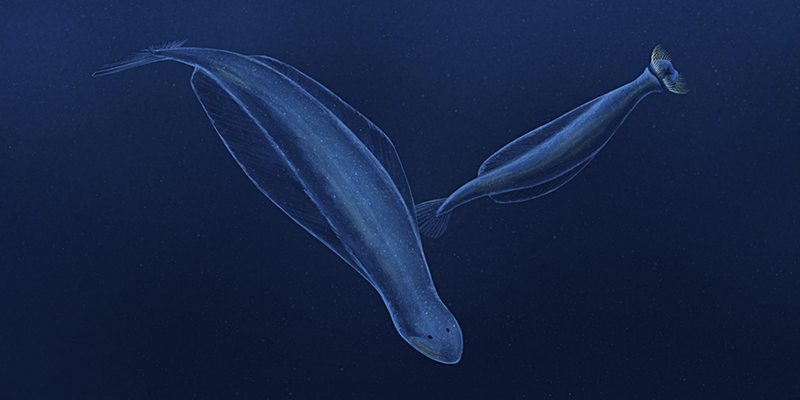Chaetognaths, commonly known as arrow worms, are a major component of marine planktonic ecosystems all around the world. They’re a fairly small phylum in terms of diversity, with only about 120 known modern species, but in sheer numbers of individuals they’re incredibly abundant – making up as much as 15% of total zooplankton biomass worldwide. They play an important role as predators, feeding on things like copepods, fish larvae, and each other, and can be so voracious that they’re sometimes nicknamed “tigers of the zooplankton”.
And they’ve been doing it for a very long time.
The appearance of protoconodont “teeth” at the start of the Cambrian (~541 million years ago) suggests that arrow-worm-like gnathiferans were some of the first active swimming planktonic predators – taking advantage of ecosystems that were becoming increasingly complex around that time, and laying the early foundations for more modern-style marine food chains.
Unfortunately we don’t know much about their evolutionary origins, with their small fragile soft bodies leaving only a very patchy fossil record. Their relationship to other animals was also rather enigmatic for a long time, and they were only very recently identified as being part of the gnathiferans.
But their ancestors may have been something like Dakorhachis thambus.
Continue reading “Cambrian Explosion Month #19: Phylum Chaetognatha”
